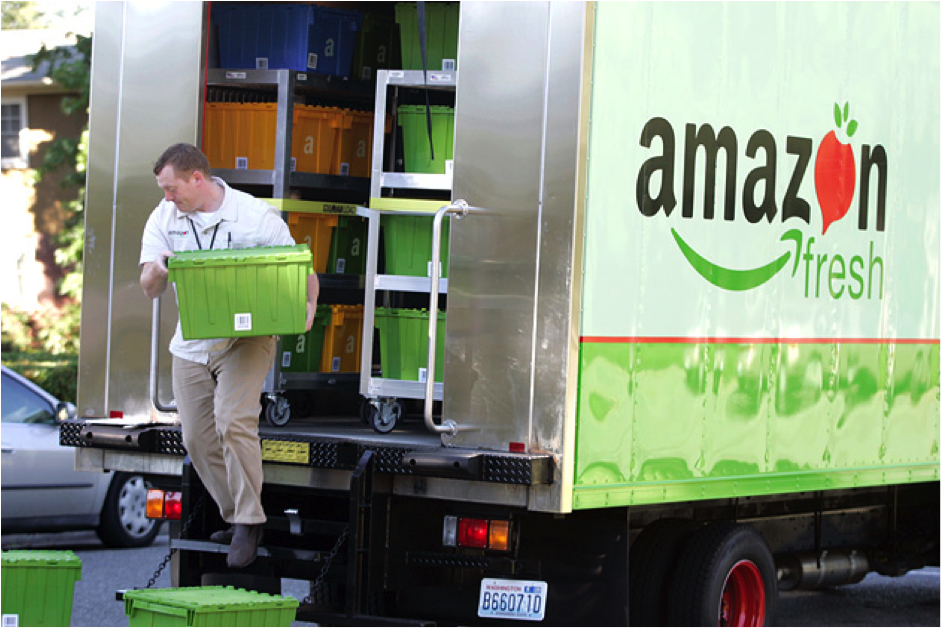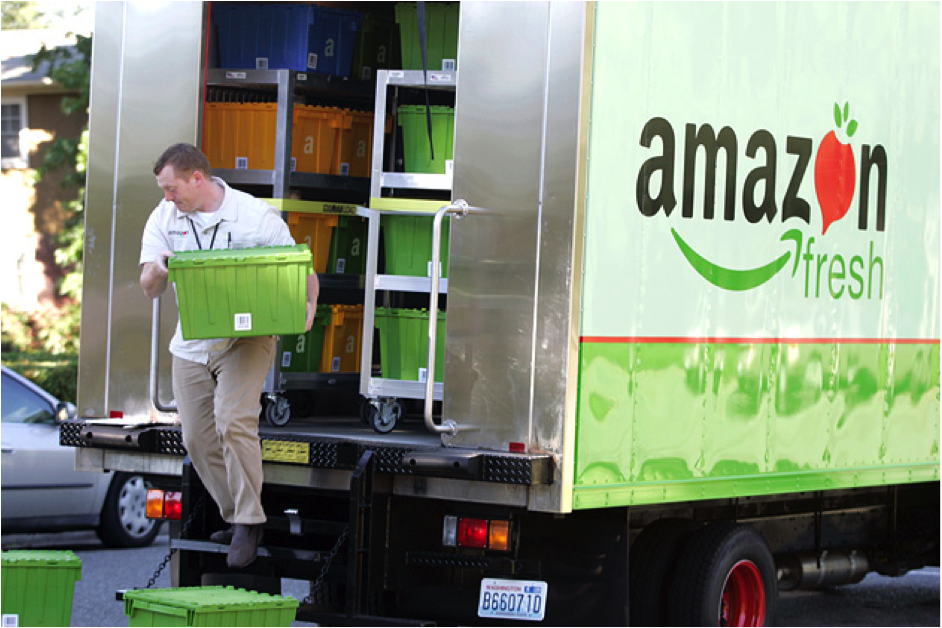

Recent commentary from Razorfish highlights the impact of significant trends occurring in the purchase of food items through digital retailers as US consumer adoption accelerates in subscriptions, click-and-collect and even home meal-kit delivery services. Today, only one percent of grocery transactions occurs online but growth in online grocery sales is set to accelerate — increasing 17 percent by 2023 and over 20 percent by 2018. This rapid acceleration outpaces the three percent growth experienced by physical supermarkets during the same timeframe.

In this blog, we outline the three key disruptions that Steve White, Vice President of Commerce Strategy at Razorfish, predicts will cause the most immediate impact on how grocers and manufacturers will market, merchandise and sell in years to come.
Challenger Brands and Private Label
The largest driver of disruption during the next five to ten years will be new and “challenger” brands. Much like Warby Parker in the eyewear space, these brands will have hopes of overinvestment in new channels to take share and create awareness without the traditional in-store shelf space and merchandising expense. It will be important for established brands to defend their category leadership positions to ensure their fair share of new channel growth. It will also be important to deliver a consistent brand experience across all channels to build shopper trust and to avoid being defined by the competition.
Of additional concern in some food categories will be the increased adoption of private label. Within CPG and food categories, usage continues to grow, with one-third of shoppers reporting an increase in buying private label products.
Food Videos
Another driver of disruption: the expansion of food usage occasions, recipes and meal solutions, all presented via video in social channels. Big players such as BuzzFeed’s Tasty videos have been viewed more than 152 million times each, and its Facebook page has 50 million likes with engagement growing by the month.
Brands will need to compete in the new service and experience economies to create relevance and participation in the lives of the changing consumer. These videos are being consumed across all demographics and are influencing every aspect of the grocery selection (and buying) experience.
CPG Subscriptions
Shoppers are subscribing to a variety of CPG items for their homes, and retailers are making it increasingly easy by setting up auto-fulfillment services. Amazon’s Subscribe & Save has been mimicked many times. Furthermore, the addition of its Dash buttons (push to reorder) and voice-operated Echo units make reordering easier than ever. Not to be outdone, subscription-based brands, such as recently acquired Dollar Shave Club, have been seeing great success outside of the traditional retail model. Subscription is a win for brands, with more brand-loyalty and higher consumption for their CPG products.
The time to innovate is now
Today, only one percent of grocery transactions occurs online but many existing shoppers (up to 60 percent on Amazon alone) are already digitally shopping – but not in CPG, grocery or food categories. Driving awareness among this group will be key to expanding digital purchases of grocery and individual (nonperishable) food items via traditional digital portals.
Traditional grocery store visits will continue to dominate, but retailers and brands alike will need to take new approaches to maintain share and loyalty. Indicators point to massive adoption in digital commerce for grocery, subscription and click-and-collect by 2020, which means that the time to act is here and the learning curve steep.
To stay up-to-date with the latest eCommerce grocery news and insights, you might also be interested in signing up to Profitero’s weekly Digital Shelf Digest.


























